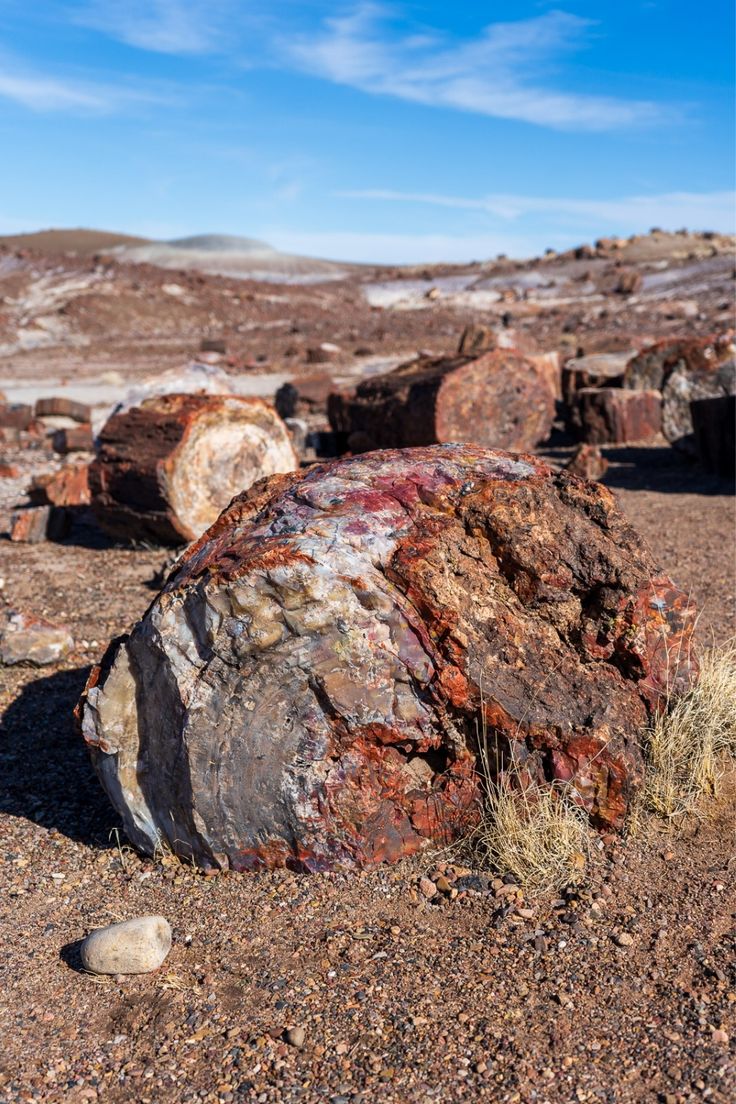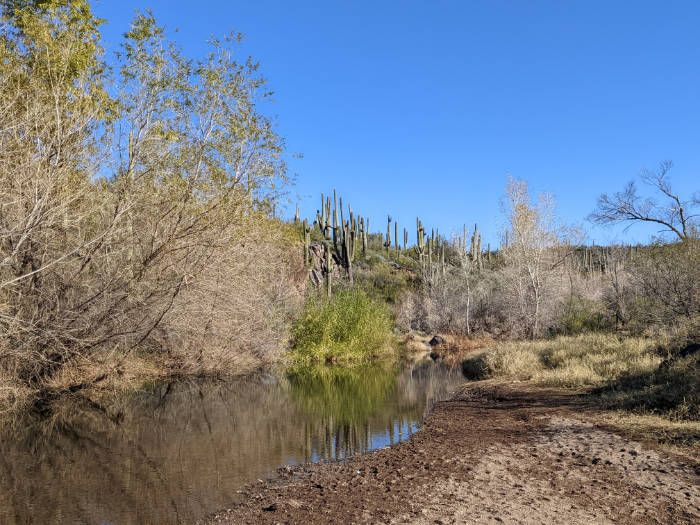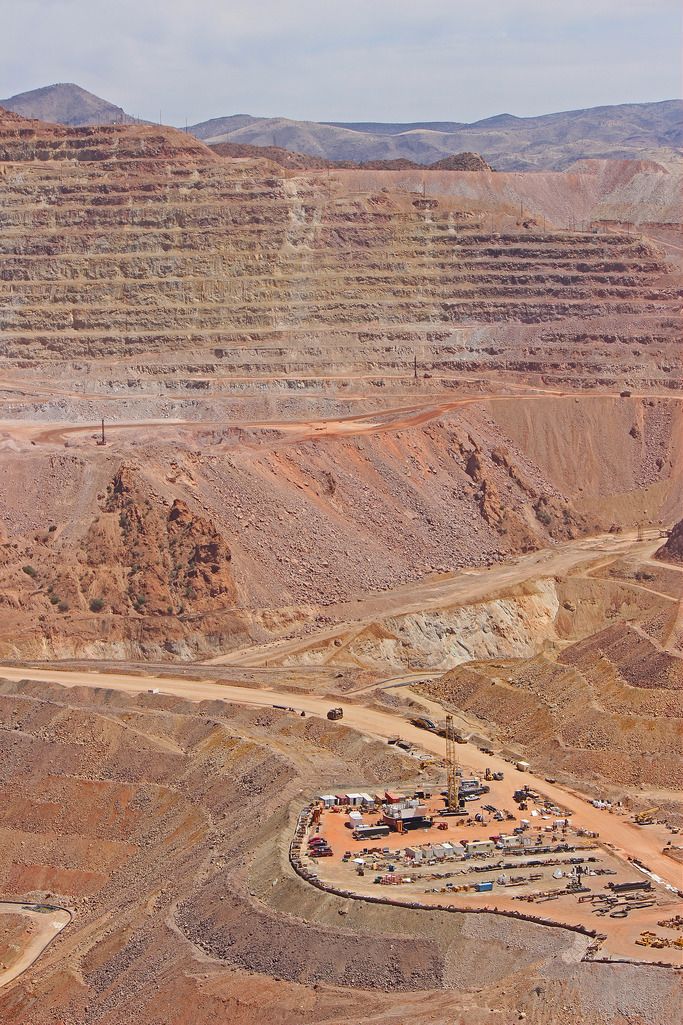About Kingman, Arizona
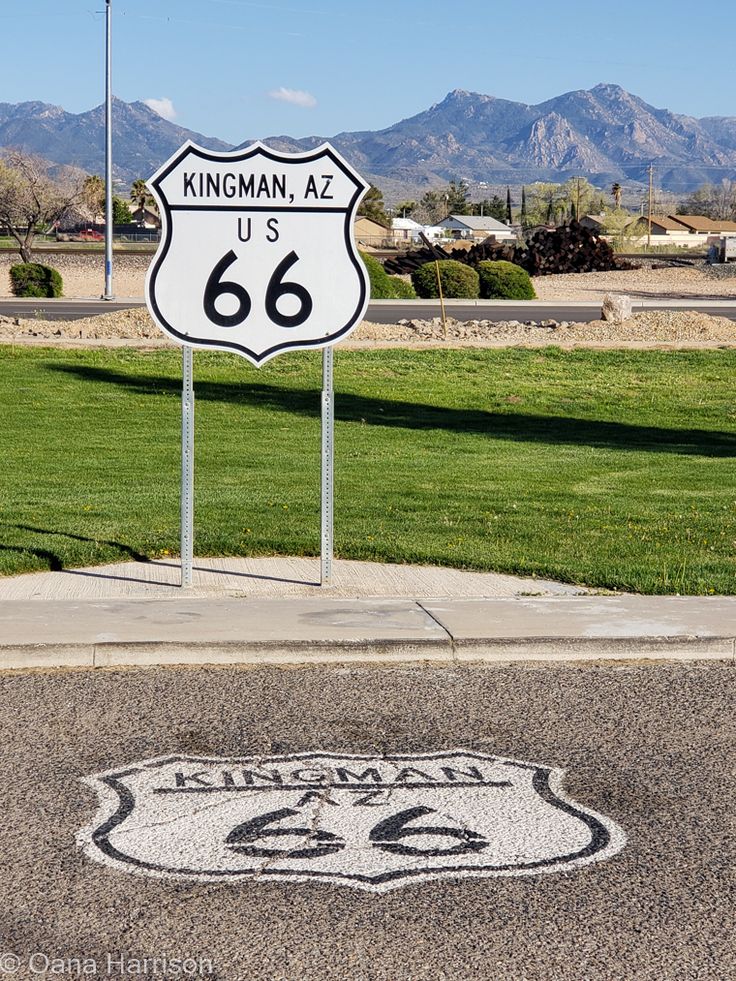
Located in Mohave County, along Route 66 in northwestern Arizona, Kingman is a hidden gem for rock enthusiasts. The area's rich history of volcanic activity and the presence of numerous old mines have created a perfect environment for discovering a wide variety of mineral gemstones and rocks. This geological past makes Kingman a prime destination for anyone looking to unearth their own treasures.
To find an abundant number of gemstones, you have to add this location to your bucket list of rockhounding locations to visit; there are many rocks and gemstones to discover in Kingman.
What Can Be Found in Kingman, Arizona
Rockhounds have found a variety of gemstones in Kingman to add to their collections. Here is a list of what you can find:
- Turquoise: Kingman is a good location to find turquoise in Arizona. Turquoise is a secondary copper mineral, and it is formed when copper-rich water reacts with aluminum and phosphorus minerals within volcanic rocks. Turquoise found in Kingman mines has a vibrant blue color and is easily recognized by its unique spiderweb matrix.
- Fire Agates: Fire agates are a variety of chalcedony that have a fire-like iridescent flash. They are formed when hot water, saturated with silica and iron oxide, fills up the cavities of rocks and solidifies into chalcedony layered with crystallized iron oxide. The color of fire agates ranges from red to orange brown, with iridescent flashes. It is said to have metaphysical properties of promoting spiritual growth, providing protection, and fostering creativity and passion.
- Opals: This is a mineraloid form of silica that occurs in the fissures of rocks and takes up a colorless white or bluish color. During the Middle Ages, opal was recognised as a gemstone that brings good luck and is considered the birthstone for October-borns.
- Chrysocolla: A bluish green gemstone with Secondary copper minerals. It is known as a stone of communication and said to bring calm to the wearer in stressful situations. It is used in soldering gold because of its gluing properties.
- Chalcedony: This variant of secondary copper minerals, retrieved from oxidised zones with traces of quartz crystals, can be found in Kingman. Usually takes up different forms; however, chalcedony agates are the common finds here in Kingman, especially fire agates. Usually used for tool making since the early 20th century.
- Arsenophrite: This iron sulfide arsenic mineral crystallises in the monoclinic crystal system and usually takes a prismatic shape. The primary source of arsenic is used in preservatives and the manufacturing of pesticides and herbicides.
Also look out for placer gold, stibnite, and kaolin minerals.
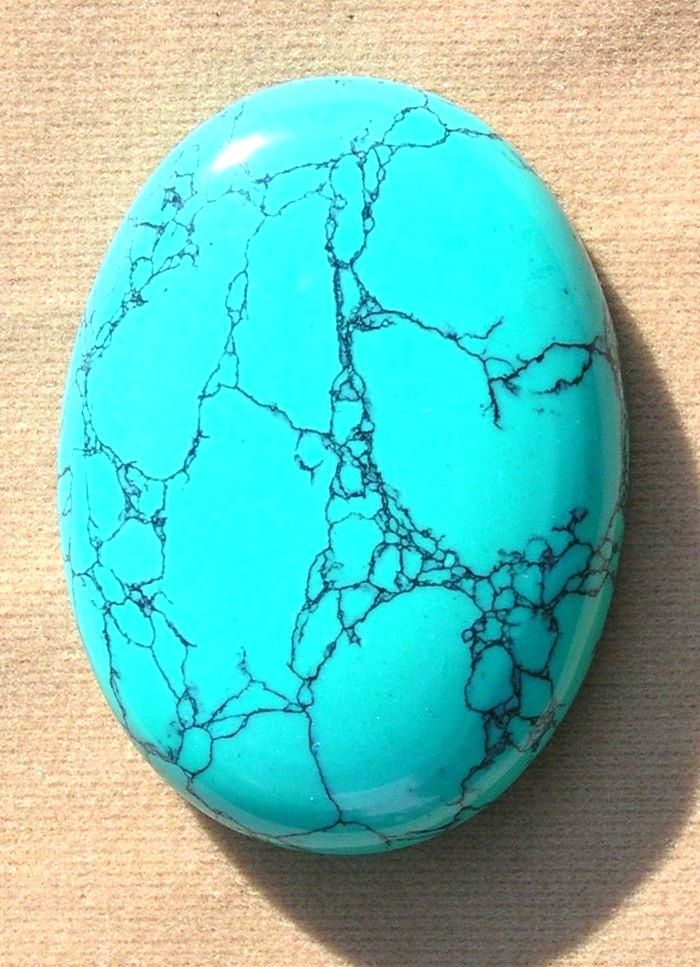
Turquoise
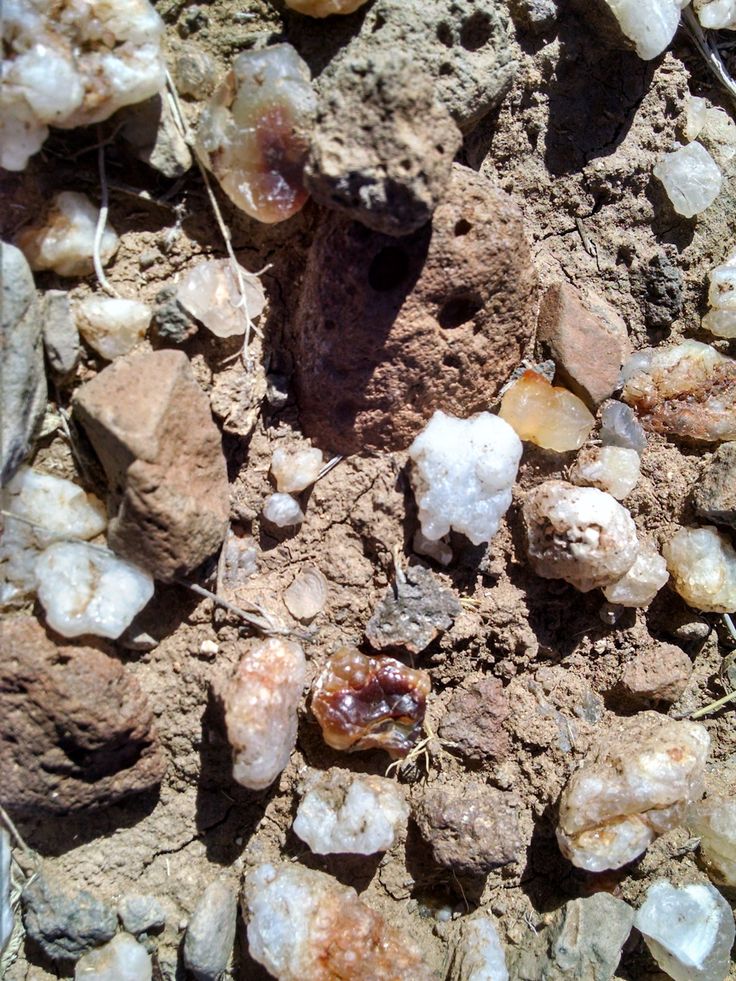
Fire Agates
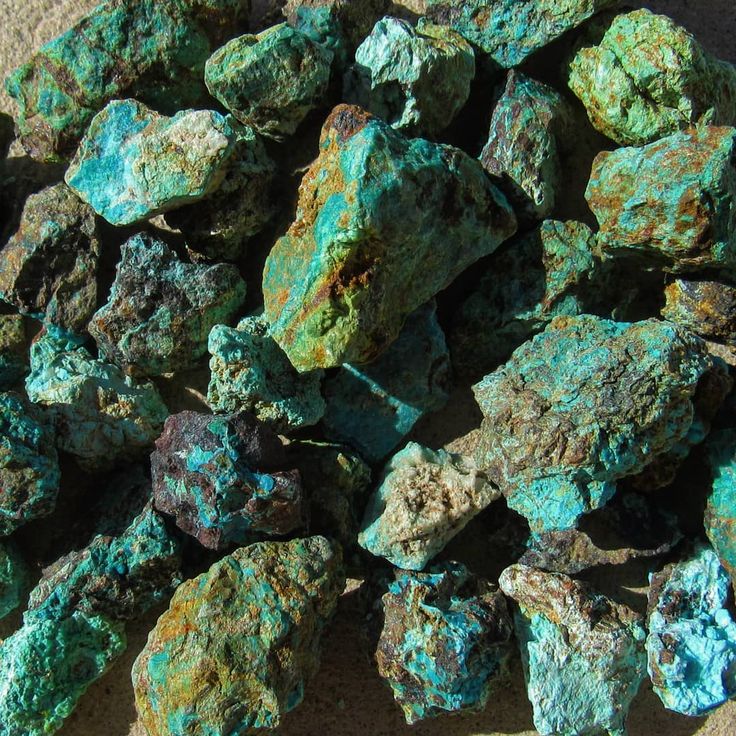
Chrysocolla
Where to go Rockhounding in Kingman, Arizona
Kingman is home to different mines and locations where rockhounds can visit for a rewarding rockhounding experience. Here are the most popular places to check out if you find yourself in Kingman.
Kingman Turquoise Mine
The Kingman Turquoise Mine is an old and famous mine known for its blue turquoise of good quality, sought by jewelers due to its stability in jewelry making. The mine, founded in 1960, mined large deposits of turquoise. Though it stopped operations in the 1970s, but reopened for operation in 2004. Deposits of turquoise in this mine is associated with the volcanic activities from millions of years ago. Volcanic rocks with veins carry the turquoise minerals alongside quartz crystals. Close to the mine is the Turquoise Mountain Mine, producing both blue and green turquoise with patterns of brown or gold. The mountain mine is still in active operations, and offers visitors tours to see the mining process and a chance to purchase turquoise from the mine.
Burro Creek
Burro Creek is quite a popular spot, located southeast of Mohave County, Kingman, Arizona. You will find a good collection of rocks, crystals, and other minerals. Rockhounds mostly find jaspers, chalcedony, agates, opalites, as well as placer gold from the gold mine that operated in the area 200 years ago. Burro Creek can be accessed off Highway 93 in Arizona. Weikiup is the closest city, about 20 miles away from Burro Creek. You can access Burro Creek via hiking trails from the Burro Creek campground. The Burro Creek Recreation Site itself, is located 17 miles from Kingman. Take the Interstate 40 route, and turn south 53 miles on Highway 93. There is a turnoff one mile south of Burro Creek Bridge, then from the turnoff, drive 1.5 miles to the recreation site via road. When you are here, explore the mountains and mesas near the creek to find varieties of mineral rocks and crystals.
Mineral Park
The Mineral Park 12 miles northwest of Kingman, located in the Cerbat Mountains within the Wallapai mining district is one of the active mines in the city. Established in 1964 and known for its production of copper, zinc, silver, gold, as well as turquoise. Currently this open pit mine is still in active operation of copper cathodes in the area.
Emerald Isle Mine
The Emerald Isle Mine is 20 miles northwest of Kingman, and four miles from Chloride, Arizona. With coordinates of 35º21'43.98" N 114º11'32.84" W in Mohave County. The mine is part of the Wallapai Mining District and is known for its extraction of ore composed of chrysocolla, a mineral found in copper deposits. You can also find conglomerate rocks, which originated during the Pliocene era, millions of years ago. This spot is unmissable, and a good place to visit in Kingman.
The Oatman Highway (Route 66)
You can also explore Route 66, the route between Kingman and Oatman, for more rockhounding potential. Most of the lands here is managed by BLM. You can search for fire agate and chalcedony. The Cuesta Fire Agate Mine is a pay-to-mine site, located along this route, and a great place to visit; however, be sure to contact and take permission from the mine owner.
Other historic mine areas around Kingman, is also a great spot to visit while you are out here. On the hills and mountains surrounding Kingman are old mine sites you can explore. Checkout Kingman Feldspar Mine presents quartz crystals and feldspar, while the BiMetal Gold Mine offers the chance for gold prospecting.
Location of Kingman, Arizona
Kingman is located in Mohave County, northwestern Arizona, at coordinates 35.1894° N, -114.0530° W, with an elevation of about 3,300 feet. The city sits along historic Route 66 and is easily accessible by car from Las Vegas, Flagstaff, and Phoenix.
Recommended Gear and Tips
Recommended Gear
Going with the right tools while rockhounding is a game-changer for your rockhounding experience. Before coming here, you will need the following tools to make your experience seamless:
- Rock Hammer and Chisel: These two tools will help you smash rocks buried deep into the earth, while the chisel helps with breaking rocks to extract the minerals or crystals you find easily.
- Pry bar: A good pry bar will help you easily dislodge rocks.
- Buckets: This will come in handy to collect and store rocks and gemstones you pick during your search.
- Safety glasses: Safety glasses will help protect your eyes from rock debris while you are dislodging or breaking rocks.
- Gloves: Wear gloves to protect your hands from injuries while picking or dismantling rocks.
- Water and Snacks: Never forget to pack some snacks and water with you. You will need to get refreshed and energised while out rockhounding.
- Bag: Carry a functional bag to enable you to pack your tools and rock specimens safely.
Recommended Gear
Recommended Tips
- Weather: Kingman is best explored during cool weather, like spring or fall. This part of Arizona can be quite hot in the summer. However, if you do find yourself here in the summer, carry along sun protection like sunscreen, a hat, or protective sunglasses.
- Research: Since most of the mining properties in the Kingman area are now privately owned, it's essential to research and secure permission before attempting to rockhound on them. Some operations, like the local turquoise mines, offer visitors guided tours and the opportunity to purchase stones directly. Even if a particular mine is closed for collecting, thorough research is key to ensuring you have the correct information and access permissions before traveling to the area for your rockhounding adventure.
- Learn the Rules: Before you go, familiarize yourself with the rules for collecting on public and private lands. The BLM allows personal use collection of up to 25 pounds per day, with a total annual limit of 250 pounds, for most minerals and gemstones. Commercial collecting is strictly prohibited without a permit. However, rules for collecting on private lands might differ, and you have to ask questions to gain the right information.
- Tools: While rockhounding in Kingman, you need the right tools for a seamless and enjoyable rockhounding experience. This is mostly a desert land, so bring plenty of water, wear sturdy shoes and protective clothing, and pack tools like a rock hammer, chisels, gloves, and a bucket or backpack to carry your finds. Check out our tools guide here to know what tools are best for this experience.
Final Thoughts
Rockhounding in Kingman, AZ, offers a mix of history, geology, and adventure. It is not just known for its highways, but offers you a glimpse into its world-renowned turquoise mines, fire agates, and other beautiful gemstones.
Kingman is one of Arizona's most exciting destinations for gem hunters and rockhounders alike. With the right gear, permits, and respect for the land, your rockhounding trip here can be both rewarding and memorable.
Other Sites in Arizona
Arizona also has other interesting sites you can explore for rockhounding purposes. Here are some other sites you can explore for gemstones and crystal rocks.
Guidebooks For Arizona
Arizona is famous for its beautiful gemstones like peridots, jasper, peridots, as well as other gems. If you want to dive deeper into the state's unique rockhounding history and gemstones, these guidebooks are excellent resources




